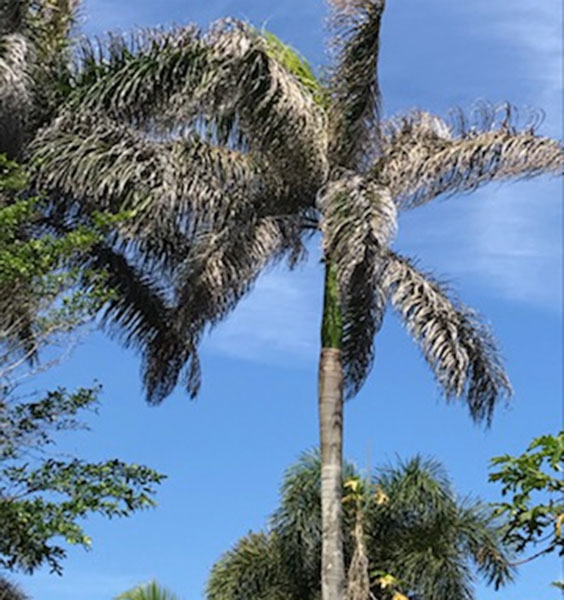Saltwater Wind Damage


Living here in South Florida, we love the sunshine and the joys of living close to the beach. Living with balmy, breezy, salty air can also mean dealing with rusted out iron planters and short-lived outdoor metal appliances. It can also play havoc with your plants and trees?


Often, we hav days of higher than usual winds and no rainfall. Easterly winds whip up the beaches, tear across properties, around walls and between structures, delivering a cargo of saltwater that clings to surfaces indiscriminately, and without any rain to wash it away. Wind-borne saltwater is frequently deposited on plants, the moisture evaporates, but the corrosive salt doesn't. Before you know it, salt will cover every leaf, bud, twig, and needle.

A gallon of seawater contains 27 teaspoons of salt with dual personalities: corrosive and abrasive. Corrosive salt breaks down the surface of plants, burning the scales that protect leaves and buds. Abrasive salt crystals grind in the wind to fairly beat up young, tender buds and leaves. All factors add up to a dull, tattered, and burned out look to a variety of plants.
Learn more about salt tolerant Florida-friendly trees at the UF IFAS Extension bulletin. https://ufdcimages.uflib.ufl.edu/IR/00/00/17/13/00001/EP01200.pdf
Coastal breezes and an occasional blustery day make choosing trees and plants for this salty environment a major consideration for landscapers and gardeners. It's no coincidence that Coconut and Sabal palms and Sea Grapes are in abundance along our coastal roads. These are salt tolerant plants. Other smaller salt-tolerant choices are Green Island Ficus or Clusia, the variegated Peperomia, sun-worshipping Agave, ferny Cardboard palms, fruit-bearing Garcinia, Spartina grass, and Silver Buttonwood. Ground-hugging bloomers like ice plant/aptenia and Baby Sun Rose are also good ground cover and rock garden plants that tolerant our salty winds.




.jpg )



